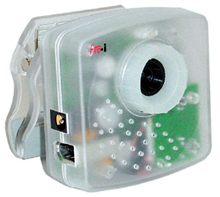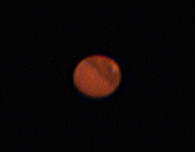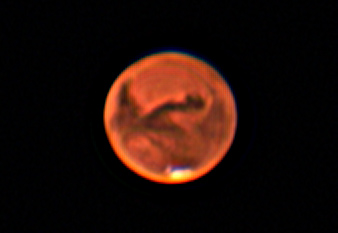(click images for a larger view)
This is what the webcam looked like originally:

I managed to hold out buying any kind of webcam for several years, so when I finally went to purchase one in June 2003, the good ones were Firewire based, so I was excited about the prospects of real-time astrophotography. Unfortunately, the Fire-I that I bought was hard to attach to my telescopes. I managed to take a few shots using eyepiece projection and several rubber bands, but it required way too much fidgeting.
Then I thought, what if it had a barrel the same diameter as a regular eyepiece? I looked at my eyepieces and couldn't spare any for dissection, so I checked out Scopetronix and they sold eyepiece extenders that looked like they'd be perfect for the job. I bought one and it came within about three days!
The next problem, of course, was how to securely fasten the extender to the Fire-I. I thought about building a box from scratch and taking the electronics out of the Fire-I and putting them in the box. But then I realized that the hole in the top of the Fire-I was almost big enough for the job. I grabbed a file and a half hour later I had made an opening just the right size! The extender was a little loose, so I applied hot glue to the other side (you can see it inside the plastic if you click on the left-hand image below for a larger view).
(click images for a larger view)
This is what the webcam looked like originally:

After I added the extender, I could then put a filter on it to protect the CCD from dust. Dust on the CCD is quite visible in images (I have successfully used a canister of compressed air to un-dust it). And even better, I can now put any eyepiece filter I want on the camera!
Here's one of the first photographs of Mars I took with this camera on 14 August 2003:

Modified Fire-I Webcam at prime focus (no eyepieces or lenses attached), Meade ETX 90 telescope. 100 frames captured using Image DV 1.3. Frames stacked with Keith's Image Stacker 3.3. Brightness adjusted and unsharp mask applied in Keith's Image Stacker. Image size reduced in Adobe PhotoShop 7.0, all on Mac OS X. South is up, at about 2 O'Clock (you can see a bit of the south polar cap).
Here's a better image I took after more practice (and with a larger telescope and when Mars was a bit closer) on 6 September 2003:

Celesctron C8 with Fire-I at prime focus. 304 frames captured using Image DV 1.3. Frames stacked with Keith's Image Stacker 3.3. Brightness adjusted and laplace sharpened in Keith's Image Stacker. South is down; this is a mirror image.
I'll be adding other images to my Meade ETX and Celestron C8 pages as I take more.
One of the nicest things about astrophotography with a webcam is that you can sit in a lawn chair looking at the computer screen and see Mars big and bright, live. You can also run your astronomy software (I love Starry Night Pro) or, if you have wireless access, surf the web for useful information while doing your viewing. It's really easy to share what you're seeing with friends, kids, etc. And I now have assurance that as I grow older and my eyesight goes downhill, I'll still be able to enjoy one of my favorite hobbies!